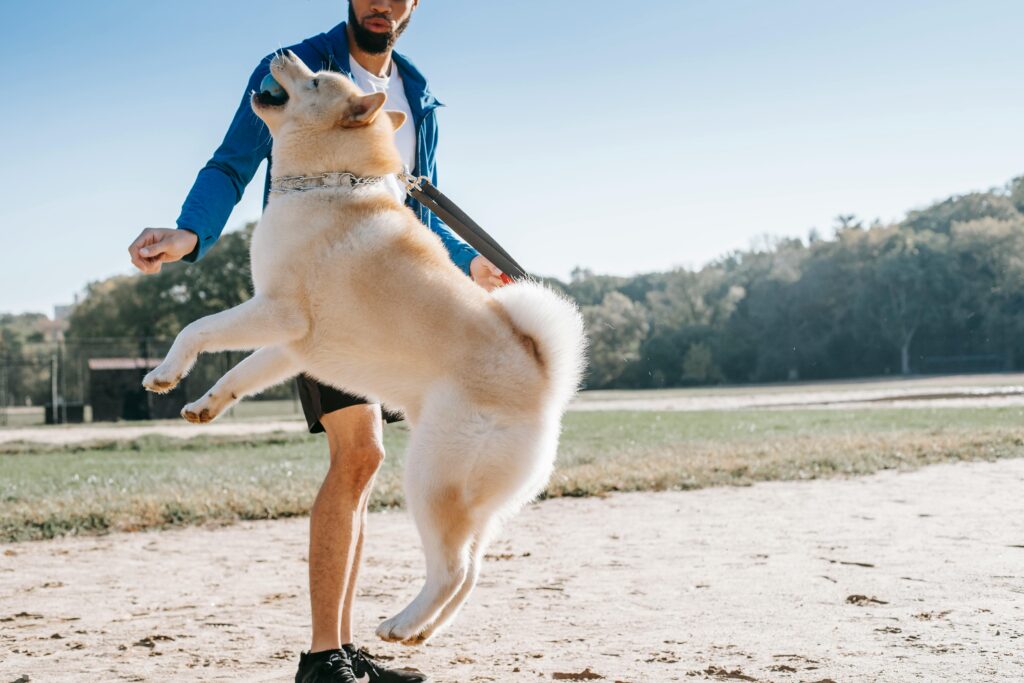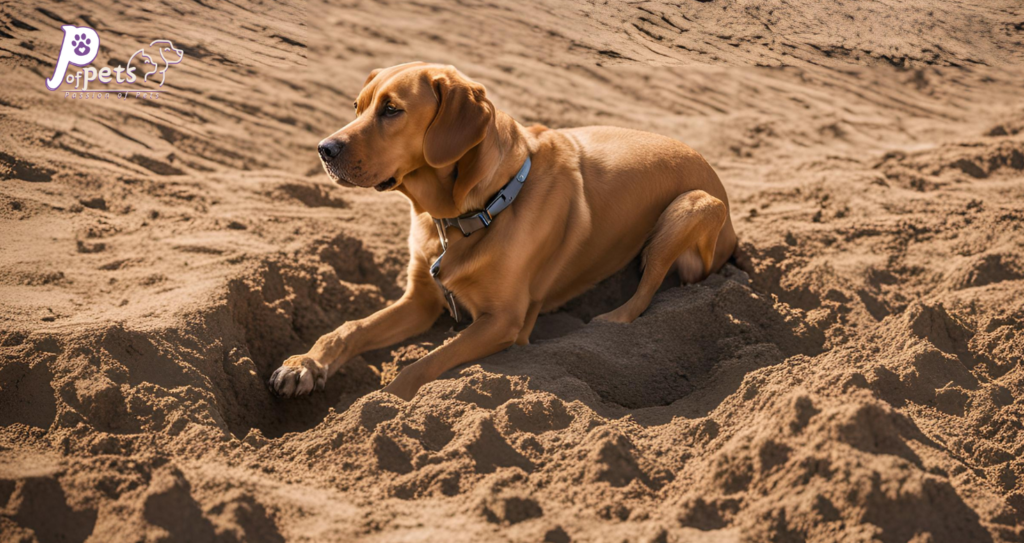Dogs are lovable, quirky, and sometimes downright puzzling. One common behavior that leaves many pet owners scratching their heads is why dogs dig on beds and couches. If you’ve ever wondered why your furry friend turns your cozy furniture into a makeshift excavation site, you’re not alone.
In this article, we’ll explore the reasons behind this behavior, how to address it, and tips to keep your furniture intact.
Why Do Dogs Dig on Beds and Couches?
Digging is a natural instinct for dogs, but when it happens on your bed or couch, it can be frustrating. Understanding the root cause of this behavior is the first step to addressing it. Below, we’ll break down the most common reasons why dogs dig on soft surfaces.
1. Instinctual Behavior
Dogs are descendants of wolves, and digging is a very instinctive behavior that was passed down to their generations. Wild wolves do this to get a comfortable sleep, hide their food from scavengers, or escape from the reach of a predator. It’s called “denning” in scientific terminology, which ultimately enables them to sustain life during periods of extremity. Your dog may simply try to act out this inherited behavior on your bed or couch.
Example: Terriers and Dachshunds were bred to hunt and burrow respectively and could therefore be more apt to dig. Terriers, for example, were bred to follow small game into burrows while Dachshunds were bred to dig into badger dens. These breeds are more apt to dig than others.
- Relevant Context: Even though your dog is not from a hunting breed, they still do this because it’s hardwired in them. Knowing this will allow you to work with patience and feel for them.
2. Comfort and Temperature Control
Dogs often dig to change a location for their purposes in terms of sleeping. Scratching and pawing on soft surfaces is a classic way of creating a den that works for the animal’s sense of comfort and rest. Sometimes, especially during cold-weather months, dogs dig to trap body heat; sometimes, especially during hot-weather months, they do so to expose cooler surfaces.
Tips: Provide your dog with a comfortable, heat-controlled bed to minimize such behavior. Consider getting beds with either memory foam or cooling gel inserts.
Additional Insight: Some dogs do dig more often if they are either in too much heat or too cold. Keep the temperature of your home in your attention and adjust according to the comfort of your dog.
3. Anxiety or Stress
Digging could be anxious or stressed dogs’ way of coping with their emotions. If your dog is uncomfortable, they may self-soothe or entertain themselves by digging. This is commonly associated with separation anxiety, noise-the thunderstorm or fireworks-and/or a change of environment, such as moving to a new home.
- Symptoms of Anxiety: Panting, pacing, whining, or destruction.
- Solution: Determine the cause of the stress and eliminate it. For instance, if the pet develops anxiety during thunderstorms, try the calming vest or put on some soothing music for him. In the case of separation anxiety, gradual desensitization along with crate training may help.
- Case Study: A study published in the Journal of Veterinary Behavior found that dogs with separation anxiety often use destructive behaviors like digging as coping mechanisms for their stress.
4. Boredom and Excess Energy
This would entertain a bored dog with built-up energy. The high-energy breeds, particularly, like the Border Collies, Australian Shepherds, and Jack Russell Terriers, are more prone to this. Such dogs, especially, would eventually dig for the sake of stimulating their minds and bodies.
- Prevention: Provide your dog with sufficient amount of exercise, both physical and mental, like walking, playing, and puzzle toys.
- Pro Tip: Add to your activities those that will mock digging, such as hiding games with toys or treats in a sandbox. This can redirect their energy in a positive way.
- Statistic: The American Kennel Club suggests that dogs who get at least 30 minutes of vigorous exercise daily are less likely to exhibit digging and other destructive behaviors.
5. Scent Marking

Dogs have scent glands in their paws, and digging can be a way to mark their territory. Thus, when they scratch your bed or couch, they are leaving their scent behind, serving them a signal against other animals that this space belongs to them.
- Fun Fact: This happens more often in multi-dog households where dogs compete for dominance or resources.
- Additional Context: Scent marking is natural in dogs; this is the way they mark their territory and signal other animals about themselves. Whereas it’s a normal thing, it is somehow irritating if your furniture gets attacked.
6. Hiding Valuables
Some dogs like to dig up their favorite toys, treats, and even food to hide it somewhere. They do this by instinct to preserve resources, taught by their wild ancestors that required them to store food somewhere so they could exist.
- Example: If your dog buries a bone in your couch cushions, they’re likely saving it for later. This behavior is more common in dogs that have experienced food scarcity or have a strong prey drive.
Tip: Give your dog a “treasure box” containing a variety of toys and treats to satisfy the need to hide things.
7. Attention-Seeking Behavior
If your dog notices that digging gets a reaction from you-even a negative one-they may continue the behavior to gain your attention. Dogs are social and want to interact, so they’ll often repeat behaviors that elicit a response from their owners.
- Tip: Avoid scolding your dog for digging. Instead, redirect their behavior with positive reinforcement. For example, if your dog starts digging on the couch, calmly guide them to their bed and reward them with a treat when they settle down.
- Further Detail: As with anything, consistency is key. If you only sometimes react to their digging, your dog may continue the behavior in hopes of getting your attention.
How to Stop Your Dog from Digging on Beds and Couches
Now that you know why dogs dig, it is time to seek some practical solutions in putting a stop to this kind of behavior. Of course, digging can be one of their natural instincts, but it doesn’t have to mean goodbye to your favorite couch or bed. With patience, consistency, and proper strategies, you could definitely help your dog change his digging habit and save your furniture. Here are some effective methods to get you started.
1. Provide a Digging Area Allowed
Just in case your dog loves to dig, better provide him with the right outlet for such behavior rather than eliminating such a habit altogether. Give your dog an area to dig his paws into and let this instinct of theirs be satisfied by keeping your furniture safe.
- How to Do It: Make a sandbox or an area in your yard that is filled with soft soil or sand. Encourage your dog to dig in it by burying toys, treats, or even a few pieces of kibble therein. Praise and reward them when they use the spot.
- Pro Tip: If you don’t have outdoor space, consider using a large, shallow container indoors, either with sand or shredded paper. Place it in a corner where your dog can dig without disturbing the household.
- Why It Works: Dogs are creatures of habit. By continuously redirecting them to their digging area, they’ll know that this is the only place where digging is allowed.
2. Invest in a Comfortable Dog Bed
Sometimes, dogs dig on furniture because they are trying to create a comfortable sleeping spot. Giving them their own comfortable bed will lessen their urge to dig on your couch or bed.
- Features to Look For: Find an orthopedic-supportive bed with washable covers and temperature-regulating materials. Some dogs enjoy having raised edges or bolsters on their bed, which makes them feel almost nest-like.
- Placement Matters: Place the bed in a quiet, secure area where your dog can go when they want to retreat. If they relate their bed with comfort and security, they are less likely to dig elsewhere.
- Additional Insight: Some dogs dig because they’re too hot or too cold. A bed with cooling gel inserts or a heated pad can help regulate their body temperature and reduce digging.

3. Increase Physical and Mental Stimulation
A bored dog is more likely to engage in destructive behaviors such as digging. Making sure your dog is well-exercised and his mind is occupied will help in reducing this behavior.
- Things to Do:
- Regular walks or running to dispose of extra energy.
- Interactive games like fetch, tug-of-war, or agility training.
Play puzzle toys or treat-dispensing toys to challenge the mind.
Pro Tip: High-energy breeds, like Border Collies or Australian Shepherds, may require more extreme activities such as hiking, swimming, or advanced training sessions. - Statistic: The American Kennel Club says that dogs that receive at least 30 minutes of vigorous exercise daily are less likely to indulge in destructive behaviors such as digging.
4. Use Positive Reinforcement
Among the best methods of correcting your dog’s behavior is through positive reinforcement. Instead of disciplining your dog for digging, reward them for good conduct.
- How to Do It: If your dog starts digging on the couch, calmly guide them to their bed or designated digging area. When they settle down or dig in the right spot, reward them with a treat, praise, or a favorite toy.
- Why It Works: Dogs respond better to rewards than punishment. By reinforcing positive behavior, you’re teaching them what’s acceptable and what’s not.
- Additional Insight: Consistency is key. Make sure everyone in your household follows the same training approach to avoid confusing your dog.
5. Address Underlying Anxiety
If your dog’s digging is linked to anxiety or stress, it’s important to address the root cause of their discomfort.
- Signs of Anxiety: Panting, pacing, whining, or destructive behavior.
- Solutions:
- Identify triggers, such as loud noises or separation anxiety, and work to minimize them.
- Use calming aids like anxiety wraps, pheromone diffusers, or calming supplements.
- Consult a veterinarian or professional dog trainer for personalized advice.
- Case Study: A research published by Journal of Veterinary Behavior notes that in general, destructive nature-like digging mainly develops among canines due to anxiety over their owner’s absence from home; resolving this reduces these habits notably.
6. Protect Your Furniture
At the same time as training goes on with your canine companion, some safety measure to the furnitures has also to be accorded a decent protection from such digging behaviors on the part of dogs.
- Hints :
- Use couch covers or blankets that can be easily washed or replaced.
- Place deterrents like double-sided tape or aluminum foil on furniture to make digging less appealing.
- Block access to certain areas using baby gates or furniture barriers.
- Pro Tip: If your dog has a favorite spot on the couch, place a large, unappealing object such as a laundry basket in that spot to discourage the habit of digging.
7. Patience and Consistency
Changing your dog’s behavior takes time and effort. It is important to remain patient and consistent throughout the training process.
- Why It Counts: Dogs learn by repetition and reward. If you give up or give mixed messages too quickly, your dog may redevelop the old behaviors.
- Encouragement: Give yourself small victories every step of the way. Even if your dog only digs a little less than he used to, that is movement in the right direction.
Conclusion
Understanding why dogs dig on beds and couches is key to addressing this common yet perplexing behavior. Whether it’s due to instinct, comfort, anxiety, or boredom, there are practical steps you can take to redirect your dog’s digging habits.
By providing a designated digging area, increasing physical activity, and using positive reinforcement, you can help your furry friend break the habit and keep your furniture intact.
Have you experienced this behavior with your dog? Share your stories and tips in the comments below! Don’t forget to share this article with fellow dog owners who might be dealing with the same issue.
Yuns Legdm is a passionate advocate for pet care and the founder of this website, dedicated to providing valuable information for fellow pet lovers and veterinary professionals worldwide. With a deep love for animals, Yuns created this platform to connect passionate pet owners with expert insights from veterinarians around the globe.
This website grows with you—the passionate pet owners and veterinary experts—creating a trusted space where knowledge, experience, and love for animals come together. Whether you’re seeking advice on pet health, nutrition, or general well-being, this platform is here to support you on your journey of responsible and loving pet care.





